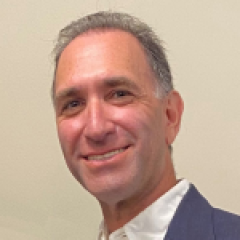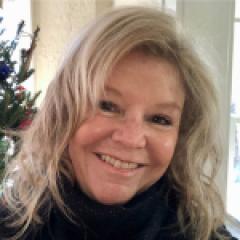Answer Sheet: At This School, Being 'Different' is an Asset

Students and staff at Denver South High School, a gold winner in the Schools of Opportunity project. (Denver South High School)
In Denver, there is a high school where more than one-third of the students were born outside the United States and where “being ‘different’ is an asset, and inclusion is the norm.”
That is part of the piece below that profiles Denver South High School, a winner in the 2017 “Schools of Opportunity” project, which recognizes public high schools that work to close opportunity gaps by creating learning environments that reach every student.
[Here are eight ‘Schools of Opportunity’ that do extraordinary things for students]
The Schools of Opportunity project started in 2014 as a pilot in New York and Colorado and went national in 2015-16. Several dozen schools have been honored in the program, which assesses a range of factors (see graphic below), including how well the adults in a school building provide health and psychological support for students, as well as judicious and fair discipline policies and a broad and enriched curriculum.
The following piece profiles Denver South High School. It was co-written by Kevin Welner, one of the founders of the Schools of Opportunity project, who is director of the National Education Policy Center at the University of Colorado at Boulder and a professor specializing in educational policy and law. The other co-writer is Linda Molner Kelley, former assistant dean of teacher education and partnerships, and director for outreach and engagement at the University of Colorado at Boulder.
The effort to detail successful public schools in traditional districts may have more resonance than ever in the era of President Trump, whose education secretary, Betsy DeVos, has made it her top priority to expand alternatives to them.
This blog recently profiled the Chicago High School for Agricultural Sciences and Lincoln High School in Nebraska and will publish profiles of other winning schools in the 2017 Schools of Opportunity cycle — six “gold” and two “silver.” Along with the Chicago, Lincoln and Denver schools are these gold winners: Broome Street Academy Charter High School in New York City, Health Sciences High & Middle College in San Diego, and Seaside High School in California. The two silver Schools of Opportunity for 2017 are: Hammond High School in Columbia, Md.; and William C. Hinkley High School in Aurora, Colo.
[Down on the farm, these Chicago high school students get a unique public education]
By Kevin Welner and Linda Molner Kelley
Denver South High School
Denver, Colorado
Principal: Jennifer Hanson
Superintendent: Tom Boasberg
Enrollment: 1,565
Economically Disadvantaged: 67 percent
It’s lunch hour at Denver South High School, and the halls and public spaces are bustling with students from all over the world.
Some of the teenagers — hailing from countries including Eritrea, Somalia, Syria, Ukraine, Iraq and El Salvador — wear native clothing while others sport U.S.-brand jeans and sneakers. As they mingle, chat and share lunch, the camaraderie is palpable.
Here, at an international school where more than one-third of the students are born outside of the United States, being “different” is an asset, and inclusion is the norm.
South serves students from 52 countries, speaking 60 different languages. Forty-three percent of South’s students are enrolled in one of the school’s English Language Learning (ELL) programs. Many are resettled refugees from war-torn countries, while others live in the relatively affluent neighborhood surrounding the school.
South embraces its diversity as the foundation for building rigorous, cross-cultural academic coursework and for providing relevant social and extracurricular options for all students.
The school offers 20 Advanced Placement classes, honors courses in all content areas, and an increasing variety of concurrent enrollment courses on site and at the local community college. All students have access to honors and AP classes, and South actively recruits students of color to opt into advanced coursework through two peer-mentoring programs, which support students who enroll in AP, honors and concurrent enrollment classes. The school also provides tutoring and a PTA-sponsored library “power hour” to support students who need extra help.
The results have been impressive. The school recently celebrated a significant increase in students of color enrolling in higher-level courses, from 70 students in 2016 to 592 in 2018.
Ikia McConnell, an African American student who transferred into the school and has just completed her junior year, told us how she has accepted the school’s challenges and takes advantage of the school’s supports. “South provides so many opportunities for support, which is helpful,” she said.
“Every teacher has at least two tutoring sessions or more per week to help students with anything, along with tutoring sessions in the libraries during lunch and after school. … Teachers try to make what students are learning actually relate to our lives or incorporate things that spark interests … and make us want to learn more,” she said.
South High provides a wonderful illustration of how diversity becomes a strength through the thoughtful, deliberate creation of learning environments. In schools where these efforts are neglected, “otherness” often become stigmatized and treated as a deficit.
But at schools such as South and Nebraska’s Lincoln High School, each new culture, language, ethnicity, identity and religion enriches the tapestry — precisely because that is how these schools are designed and sustained.
Some of this thoughtfulness is found in the academic resources. Strong supports for emerging bilingual students are vital to the school’s mission and success. A Newcomer Program helps students with little or no formal schooling to learn how American schools operate while receiving intensive English instruction. All teachers at the school have ELL certifications.
As they progress, ELL students have opportunities to take general education and AP and honors courses. Students learning English, along with other international students, serve as representatives in the Student Senate.
Impressive “heritage” classes in Spanish and Arabic support advanced native language development, and paraprofessionals fluent in other languages assist native speakers in ELL and content classes. Last year, 80 of South’s seniors earned a Seal of Biliteracy from the district, certifying their proficiency in two or more languages.
Teachers study social justice issues and design their student-centered classes to include different perspectives. In an AP History class studying the Civil War, for example, we observed a group of extraordinarily diverse learners engaged in a lively discussion as they responded to quotes about Robert E. Lee from two people: White House Chief of Staff John F. Kelly and Ta-Nehisi Coates, the African American author and journalist.
The school’s courses and curriculum reflect the cultural backgrounds and interests of the student body. Elective classes include world history, social problems, Holocaust and human behavior, queer literature, women’s literature, African American literature and Hispanic American literature.
Isaiah Acosta, another Colorado native student who just completed his junior year at South, describes himself to us as “from a proud Chicano family” and tells us he practices Spanish with his grandmother. He stressed how much he appreciates the inclusion of his culture in his classes.
“I loved my culture and wanted to know everything about it, although the schools I had gone to made it feel as though my culture had no backstory, ignoring the truth of our beautiful history,” he said.
“That was my reality until I began my journey of knowledge at Denver South,” he said. “I began to learn my story, similar to other students who began to learn theirs. I learned about how my ancestors fought for their rights here in Denver. No part of American history is ignored: At Denver South, no matter your culture, no matter your ideals, your story and the story of your ancestors will be told.”
South also involves its parents and community members as genuine partners. Home visits from teachers and administrators help to establish these relationships. These visits are made to all incoming ninth–grade families, with subsequent home visits added when they would be useful. Staff members fluent in at least 10 languages communicate with parents. The school boasts 30 community partnerships that support students and families, as well as a health clinic on site.
South’s emphasis on inclusion also extends to social activities. Eighty percent of South’s students are involved in athletics or one of 60 student-led clubs. The school sponsors inclusive athletics and a unified physical education program in which special education students are joined by general education peers to play modified and adapted sports.
Student clubs target academics (model United Nations, engineering), athletics and gaming (yoga, international gaming), life skills (meditation, digital media), leadership (spirit, JROTC), and the arts (hip-hop dance team, mindful drawing).
Other club options touch on student’s heritages, cultural backgrounds and identities, including Gay/Straight Alliance, Feminist Club, Mi Gente, Jewish Student Connection, Black Student Alliance, Muslim Student Alliance, Chinese Club, Native American Student Alliance, Together We Stand (Diversity) Club and United Women of Color.
At this school where everyone belongs, diversity really is a strength, cultivated every day by South’s leadership and staff, as well as its students.
“They come from across the street and from across the world,” Principal Jen Hanson said in a Denver Post interview. (The newspaper’s video does a great job capturing what makes the school special.)
“We believe we are the epitome of what a public school can and should be,” he was quoted as saying.
We do, too, and we congratulate Denver South High School for its achievements as a world-class Gold School of Opportunity.
This blog post has been shared by permission from the author.
Readers wishing to comment on the content are encouraged to do so via the link to the original post.
Find the original post here:
The views expressed by the blogger are not necessarily those of NEPC.


